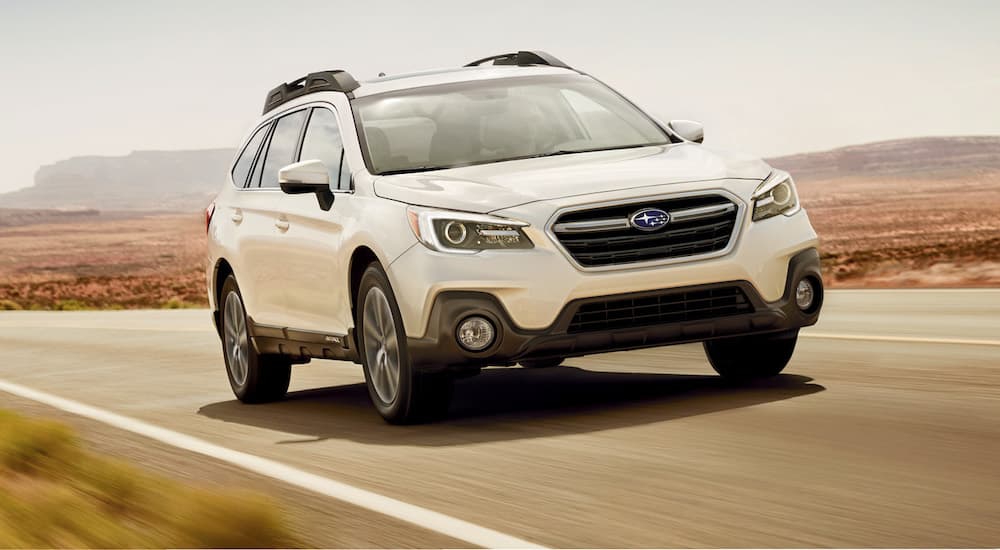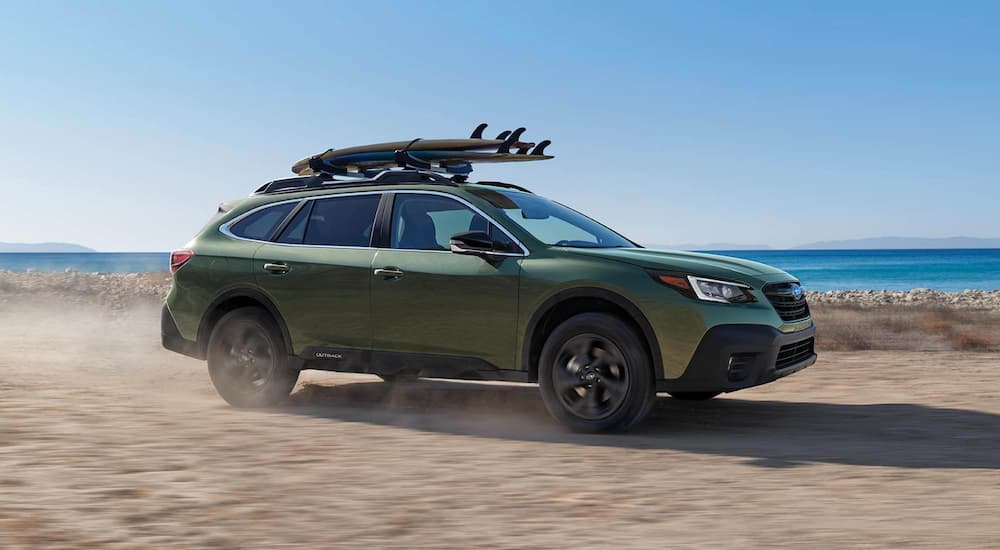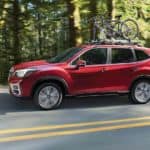If you’re browsing at your local used Subaru dealership, it’s more than likely that you’ll see plenty of Outbacks on the lot. This model has been around since 1994, so it’s been through its fair share of upgrades. Some changes from year to year have been hugely significant, while others have been mostly cosmetic. And along with the base model, there have been a number of different trims introduced over the years, each of which come loaded with extra features. If you’re trying to decide which model is right for you, it might be helpful to check out the history of the Outback.
From Legacy to Outback
The original Outback is based on a wagon variant of the Subaru Legacy. Thanks to protective cladding, it’s better suited to off-roading than the standard Legacy and it also has a higher roof. Otherwise, though, the first “Legacy Outback” is not very different from the standard, second-generation Legacy.
Eventually, the Outback was spun off completely into its own model. Today, the two cars have completely different looks and purposes. The Legacy is a sleek sedan that looks at-home in a city while the Outback is a more rugged crossover that’s ready for adventure.
First Generation
The 1994 Outback is still very closely modeled after the Legacy, and the 1995 version features largely aesthetic changes, like updating the paint and upholstery. But the 1996 model saw some major updates to the mechanical side of things. This Outback has a raised suspension and the option to upgrade to a more powerful engine, responding to a desire from consumers for more versatility and durability.
Later Generations
In their second generation, Outbacks grew longer and wider, allowing for more passenger comfort and cargo space. In their third generation, the model got an even more powerful engine and an updated exterior design better suited to modern tastes. Fourth-generation models have wheels that are closer to the corners of the body than those of their predecessors, which reduces overhangs. The fifth-generation Outback was the first to be classified as a crossover, rather than a wagon, due to its larger size and higher horsepower. Meanwhile, the sixth-generation, which debuted in 2019, introduced a more modern interior design, new taillights, and all-wheel drive as a standard feature on every trim.
The Recent Evolution of the Outback
Now that we have an idea of the bigger picture, let’s zoom in and check out the differences between more recent versions on a granular level. These are the years that you’re most likely to come across at a used Subaru dealer, so it’s important to know what each one has to offer. While Subaru works to improve each new version of the Outback, older models are still reliable vehicles with plenty of mileage ahead of them.
2017 Subaru Outback
This model year saw the introduction of the Outback Touring, which has roof rails, lower body cladding, and a heated steering wheel. It also has some unique cosmetic touches, like a dark-gray grille and wood-grain accents in the interior. The Touring and Limited versions both feature Subaru’s EyeSight technology, which uses cameras to adjust cruise control, provide lane departure warnings, keep track of the traffic around you, and even brake to avoid collision in case of emergencies. These editions also feature automatic high-beam headlights, allowing for higher visibility on dark roads without the risk of dazing oncoming traffic.
Subaru Starlink is a standard feature across all trims for this model year. This system is simple and intuitive, though the 2017 models don’t have the wide range of features offered by their more modern counterparts. While the most basic trim still features a 6.2” responsive touchscreen, none of the Outbacks from this year include Apple Carplay or Android Auto compatibility.
2018 Subaru Outback
To the delight of smartphone owners, Apple CarPlay and Android Auto connectivity is included in the 2018 Outback’s lineup. This feature—a must-have by today’s standards—allows drivers to easily access navigation apps, music, ebooks, news, and podcasts through their vehicle’s interface.
The size of the display screen is also increased, making its information easier to absorb at a glance. Adaptive headlights are available as an optional feature as well. This upgrade uses input from the steering wheel to point the headlights to the left or right—in order to help drivers see around sharp turns at night.

2019 Subaru Outback
No longer an optional feature with an added cost, EyeSight comes standard on all 2019 Outback models. The interior sports two USB ports, so you can easily charge your devices on the go. On the Limited and Premium editions, the rearview mirror features auto-dimming, which automatically prevents you from getting distracted by bright headlights behind you; a digital compass to help you find your way in unfamiliar areas; and HomeLink, which allows you to program buttons on the bottom of the mirror to operate garage doors, security gates, and other RF devices.
2020 Subaru Outback
The 2020 Outback has more room in the back seat and can hold more cargo, making it great for road trips. If the standard engine isn’t powerful enough for your needs, you can upgrade to a turbocharged version, which increases the vehicle’s maximum towing capacity to 3,500 lbs—800 pounds more than the standard model’s towing capacity. Extra features on the Premium version include a mobile 4G hotspot, heated front seats, and extra USB ports. Every trim other than the most basic includes dual-zone climate control as well, which means that the driver and passenger can set their temperatures independently—so everyone will be comfortable.
2021 Subaru Outback
Three high-tech safety features that were previously optional became standard across all Outbacks for the 2021 model year. Adaptive headlights increase nighttime visibility, a passenger seatbelt warning ensures that everyone is buckled up, and a rear-seat reminder system is designed to prevent young children and pets from being accidentally left in the car. A new exterior color called Brilliant Bronze Metallic was introduced and is available for certain 2021 trims.

2022 Subaru Outback
This model year introduced a new version to the lineup: the Outback Wilderness. This rugged edition has upgraded suspension for a smoother ride over rough terrain, extra ground clearance to keep vital components safe from rocks and other obstacles, and all-terrain tires that provide great traction on a variety of surfaces. It also comes standard with a turbocharged engine and a roof rack that can hold up to 700 lbs. Water-repellent upholstery makes the interior easy to keep clean, even if you get caught in the rain or track in some mud. In addition to these utilitarian changes, the Wilderness also features some aesthetic differences from the base model, like black exterior trim and Anodized Copper accents that lend the vehicle a rugged-yet-stylish look.
High-tech features like forward collision and lane departure warnings, crash imminent braking, and dynamic brake support all come standard in every version of the 2022 Outback. This model year has a 5-star overall safety rating from the National Highway Traffic Safety Administration, so you can feel secure behind the wheel. Note that, while the base version continues to offer popular features like standard all-wheel drive and a roomy interior, it’s not drastically different from the 2021 Outback.
Why Get an Outback?
As its name suggests, the Outback has always been designed with more adventurous drivers in mind. But, perhaps since it can trace its roots back to the more urban-friendly Legacy, it also offers useful features for day-to-day driving around town, like a comfortable interior, modern infotainment, and a more manageable size than most true SUVs. This versatility has made the Subaru Outback popular with drivers ranging from rock climbers to soccer moms. Whichever model year or trim fits your budget and lifestyle best, it’s hard to go wrong with this perennial favorite.



